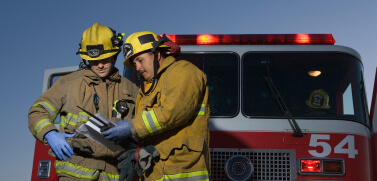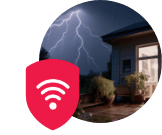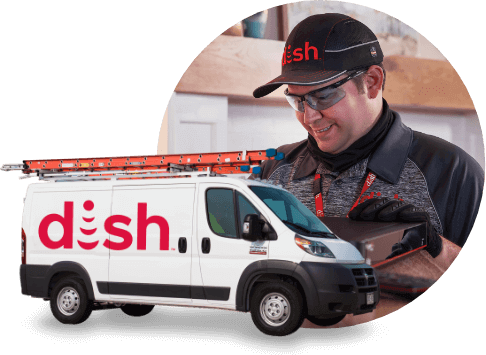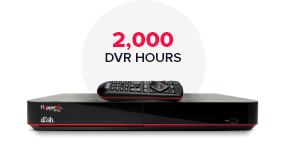Internet Requirements For Telemedicine and Remote Monitoring for Elderly Care

Table of Contents
Your 78-year-old grandmother manages her diabetes with a few clicks on her tablet, video-chats with her cardiologist from the comfort of her living room, and wears a smart device that alerts her children if something’s wrong—all while living independently in the home she’s cherished for decades. This is the reality of modern elderly care powered by reliable internet connections. The question is, what is a reliable internet connection? Internet requirements for telemedicine and remote monitoring for elderly care can vary.
Not all internet connections are created equal when it comes to supporting the sophisticated demands of telemedicine and remote health monitoring. The difference between a choppy video call with your doctor and a crystal-clear consultation that could save your life often comes down to having the right internet setup.

The speed you need
Internet Requirements for Telemedicine
When it comes to telemedicine for elderly care, internet speed isn’t just about faster downloads—it’s about ensuring critical health communications flow smoothly. The requirements vary significantly depending on the type of medical interaction you’re having.
Basic Telemedicine Requirements
The Congressional Research Service recommends that telehealth platforms operate at a 4 Mbps downstream transmission capacity and a 1 Mbps upstream transmission capacity to ensure adequate service speeds for both patients and providers [1]. However, this baseline may not provide the best experience for all situations.
To achieve a satisfactory video consultation experience, you should have a minimum of 10 Mbps for download speed and 5 Mbps for upload speed. Internet speed is vital to avoid video lags during the consultation. This higher standard ensures that video calls remain clear and uninterrupted, which is crucial when discussing important health information with your doctor.
Advanced Telemedicine Applications
For more sophisticated telemedicine applications, the requirements increase substantially. Video telemedicine requires a minimum download speed of 25 Mbps and a minimum upload speed of 3 Mbps. Depending on the number of devices simultaneously streaming content, latency, and other factors, higher download and upload speeds may be needed.
Overcoming Technology Barriers for Seniors
While the benefits of telemedicine and remote monitoring are clear, seniors face unique challenges when adopting these technologies.
Common Technology Challenges
Barriers to entry include visual and hearing impairments, inexperience with technology, trust issues, and limited internet access. However, various platforms have addressed concerns by providing user-friendly interfaces and personalized support.
These challenges are real but surmountable. The key lies in selecting the right combination of technology and support systems that align with individual capabilities and comfort levels.
Connectivity Solutions
Internet access remains a fundamental barrier for many seniors. Access to telemedicine may be particularly challenging for low-income patients and those in rural areas, who often lack reliable internet access through smartphones or computers.
According to data from the Federal Communications Commission, 12% of rural Americans lack access to 10 Mbps; 27% lack access to 25 Mbps, and 42% lack access to 100 Mbps. The digital divide has a significant impact on elderly Americans, who often reside in rural areas and may have limited financial resources.
Device and Setup Considerations
When selecting a monitoring device, it is crucial to consider the sensor’s connectivity, mobility, and range. Connectivity refers to how the device will connect to the internet or other devices. Mobility refers to the device’s ability to be easily moved and whether it can be worn on the body. Range refers to the distance from the senior device at which it can be placed and still function properly.

Internet providers for senior healthcare
Choosing the Right Internet Provider for Elderly Care
Selecting an internet service provider (ISP) for elderly care requires balancing reliability, speed, customer service, and affordability. The stakes are higher when internet connectivity has a direct impact on health and safety.
Top Providers for Seniors
Spectrum offers the best value internet for seniors in 2025, with AT&T and Xfinity as other top choices based on price, customer satisfaction, and speed.
Spectrum stands out for several reasons:
- Spectrum makes getting the internet simple and affordable.
- No data caps or contract requirements
- Reliable customer service
- Wide availability across rural and suburban areas
AT&T offers excellent fiber options where available:
- AT&T offers fast internet, up to 5,000 Mbps with fiber internet; however, please note that this service may not be available in all areas.
- Professional installation is included for fiber services
Xfinity provides comprehensive coverage and senior-friendly options:
- Xfinity introductory plan prices are some of the best in the industry
- Great promotional pricing for 1-2 years
- Be aware, pricing usually increases once the promotional period ends
Rural Internet Solutions
For seniors living in rural areas, traditional cable and fiber options may not be available. Fortunately, newer technologies are filling this gap.
T-Mobile 5G Home Internet has emerged as a strong rural option:
- T-Mobile’s 5G network offers wide nationwide availability, but relies on 5G LTE to help cover its home internet service area.
- T-Mobile utilizes its existing nationwide 5G cellular network to power its home internet service, making it a suitable option for seniors across the country. This service is an excellent choice for those living in areas with good cell phone reception, as well as in rural areas where other options may not be readily available.
Satellite Internet Options for the most remote areas:
HughesNet is an excellent choice for satellite internet:
- Offers some of the lowest-cost plans
- One of the largest providers of satellite internet, known for its coast-to-coast coverage and wide availability
Starlink provides faster speeds but at a higher cost:
- Incredibly fast download and upload speeds
- Higher cost per month
- Widespread availability
- Customers have reported difficulty setting up the satellite and issues reaching customer service
Making the Right Choice for Your Family
Selecting the right internet service and technology setup for elderly care requires balancing multiple factors: technical requirements, budget constraints, geographic limitations, and personal comfort levels with technology.
Assessment Questions
Before choosing an internet provider, consider:
- What are the geographic constraints? Rural areas offer different options compared to urban locations.
- What is the budget for both internet service and equipment? Factor in monthly service costs, equipment purchases, and potential insurance coverage.
- What support systems are available? Consider both technical support from providers and assistance from family or caregivers.

Reliable internet is crucial
Internet as Essential Healthcare Infrastructure
The American Medical Informatics Association (AMIA) wrote a letter in 2018 urging the FCC to designate broadband access as a “social determinant of health," meaning that a lack of broadband access is a structural factor that impacts health outcomes [2].
For elderly Americans, reliable internet access has evolved from a convenience to an essential component of healthcare infrastructure. The ability to connect with healthcare providers, monitor vital signs, and maintain independence while aging in place depends fundamentally on having the right internet connection.
Telemedicine has emerged as a game-changer in the healthcare industry, particularly for individuals who aspire to age in their own homes. By providing convenient access to medical care, telemedicine supports the independence of older adults and enhances their overall quality of life.
Investing in proper internet infrastructure for elderly care yields dividends in improved health outcomes, enhanced family peace of mind, and continued independence. As the technology continues to evolve and become more accessible, the gap between urban and rural healthcare access will continue to narrow.
The future of aging in America increasingly depends on digital connections that enable seniors to receive world-class healthcare without leaving the comfort and safety of their own homes. For families navigating these choices, the time to act is now—before the need becomes urgent.
Find the Right Internet Provider Near Me for Elderly Care!
Ready to ensure your family has the internet connection needed for quality telemedicine and remote monitoring? The right provider can make the difference between struggling with poor connections during important medical consultations and having the peace of mind that comes with reliable, high-speed internet.
Don’t wait until you need emergency telemedicine services to discover your internet isn’t up to the task. Take action today to secure the connectivity that could be crucial for your family’s health and independence.
Enter your zip code here to discover internet providers in your area that meet the requirements for telemedicine and remote monitoring.
Compare speeds, prices, and reliability ratings from providers. Call 1-833-933-2468 for personalized recommendations based on your location, budget, and specific elderly care needs.
Your family’s health and independence are too important to leave to chance. Find the right internet solution today.
Frequently Asked Questions
What internet speed is required for basic telemedicine appointments?
For basic video consultations, a minimum of 10 Mbps download and 5 Mbps upload speeds are required.
What should I do if I live in a rural area with limited internet options for elderly care?
Check T-Mobile or Verizon 5G Home Internet first. For very remote areas, consider satellite providers such as HughesNet or Starlink.
Sources
[2] Brookings.edu. “Digital Prosperity Report"












 Call
Call 

 Access Your Account
Access Your Account